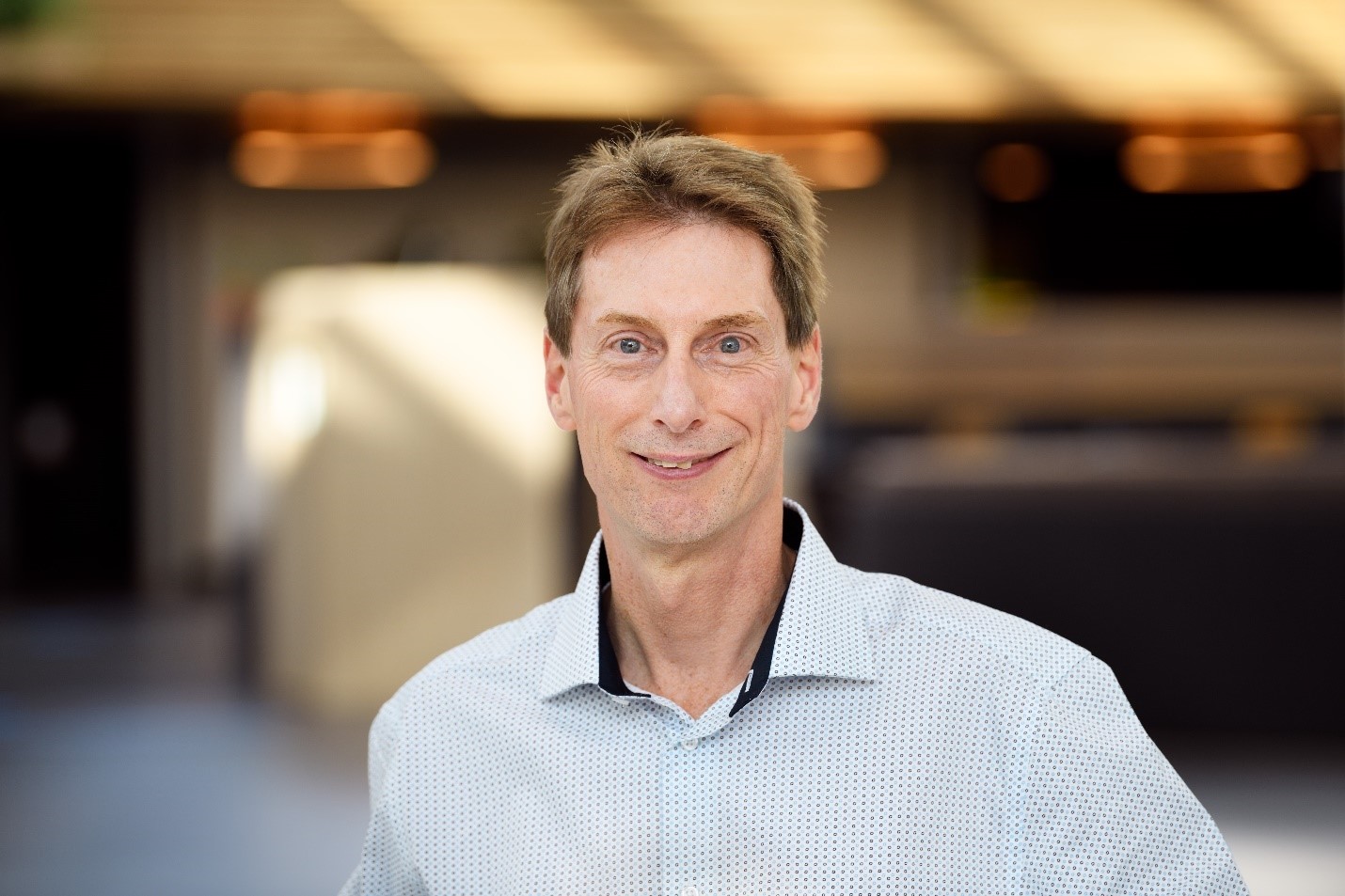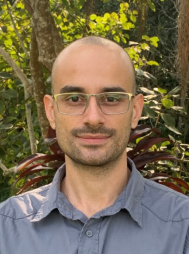Project Description
Special Interest Conference: Precision Motion Systems & Control
12th – 13th November 2024
Special Interest Conference: Precision Motion Systems & Control
Brabanthallen’s-Hertogenbosch, The Netherlands, NL
12th – 13th November 2024
In conjunction with the Precision Fair, we are delighted to bring together our third Special Interest Conference on Precision Motion Systems & Control.
Precision motion systems and their control are key elements for precision engineering, both for manufacturing applications as well as for measuring instruments. From one-dimensional systems to complex multi-axis machines, components for linear and angular guides, actuation, measurement and control of motion are needed for precision positioning tasks.
Increasing demands on the throughput of manufacturing systems and measuring instruments lead to the development of motion systems with higher dynamics and corresponding challenges for position control.
As a consequence, the research on and the development of precision motion components, systems and their control is a focus area for industry, academia and the scientific instrumentation community.
The third euspen Special Interest Conference (SIC) on Precision Motion Systems & Control meeting will bring together researchers and practitioners from academia, industry and government agencies to discuss state-of-the-art practice, and key research and development in the area of precision engineering associated with Precision Motion Systems & Control. The meeting includes keynote presentations, oral sessions, posters and training seminars covering the newest developments and research.
This event is being held in conjunction with the Precision Fair allowing our delegates the opportunity to visit this tradeshow of over 300 exhibiting organisations.
The intensive on-going work in this area led us to bring together this internationally-coordinated meeting and we are seeking papers in the following categories, which are given for orientation, however, possible contributions are not limited to these:
- Precision guide components and systems
- Linear and angular actuators
- Linear and angular position measurement systems
- Motion controllers and drive amplifiers
- New approaches in control algorithms
- Multi-axis positioning systems
- High dynamic positioning systems
- Vibration isolation and active damping systems
- Modelling and analysis of high performance mechatronics designs
- System identification, testing and trouble-shooting
- Kinematic motion errors characterization and modelling
- Robotic systems
- Mechatronic system architecture
The local hosts and organising committee for the Special Interest Conference on Precision Motion Systems & Control are :- Dick Laro, MI-Partners, NL; Dr. Jens Flügge from PTB, DE; Prof. José Yagüe-Fabra, University of Zaragoza, ES; Markus Hauf from Carl Zeiss, DE ; Dr. Theo Ruijl, MI-Partners, NL and Dr. Harkaitz Urreta, IDEKO, ES.
The Precision Motion Systems & Control meeting chair is Prof. José Yagüe-Fabra from University of Zaragoza, ES
Key Dates:
23rd August 2024
Online abstract submission deadline
20th September 2024
Notification of Presentation Award (Oral/Poster)
23rd September 2024
Programme available online/ Registration opens
Registration Fees
- €195 +VAT – euspen student members*
- €450 +VAT – euspen members
- €550+VAT – Non-euspen members
- €650+VAT – Exhibitor (table top)
- €45 +VAT – Student Networking Dinner
* Student members fee is not inclusive of the networking dinner.
All speakers and presenters must register for the conference using the appropriate delegate fee.
Submit an abstract for Precision Motion Systems & Control 2024
We are delighted to bring together leading expertise globally to an open forum for
focused presentations and discussions on Precision Motion Systems & Control
Announcement & Call for Abstracts
Come and join your international peers and maintain a leading edge on technology, customers, partners and suppliers. Access the greatest minds in Precision Motion Systems & Control, share knowledge and information and stimulate debates.
Themes:-
- Precision guide components and systems
- Linear and angular actuators
- Linear and angular position measurement systems
- Motion controllers and drive amplifiers
- New approaches in control algorithms
- Multi-axis positioning systems
- High dynamic positioning systems
- Vibration isolation and active damping systems
- Modelling and analysis of high performance mechatronics designs
- System identification, testing and trouble-shooting
- Kinematic motion errors characterization and modelling
- Robotic systems
- Mechatronic system architecture
Submission of abstracts
Abstracts are expected to describe original work, previously unpublished and should indicate new and significant advances and their importance. Short abstracts should be a minimum of two A4 pages in length and should be submitted online using the ‘abstract submissions’ button above.
Following a review of submitted abstracts, authors will be notified of acceptance of presentation mode (poster/oral).
The invitation to submit an abstract does not constitute an offer to pay travel, accommodation or registration costs associated with the conference. Similarly, no speaker fee is paid to successful participants. All speakers must register for the conference and transfer registration fee. In specific cases the organising committee reserves the right to deviate from the standard procedure.
Submission deadline: 23rd August 2024
Keynotes

Prof. Hans Butler
ASML, NL
Accurate motion in lithography – Why? How? and is it any Fun?
In lithographic tools used in chip manufacturing, an optical system exposes an image on a mask onto a wafer, in a scanning fashion. In 25 years, the resolution of lithographic machines has increased 10-fold, resulting in a 100x higher transistor density in chips, while at the same time their throughput, in number of wafers per hour, has increased significantly. An ultimate positioning precision, together with high acceleration levels, is required for the scanning components and the optical elements involved.
This presentation explains the background of the position accuracy requirements and how these developed over time, the components in the system for which accurate positioning is critical, and the general principles used to achieve it. Key developments of the system architecture and module design over time are illustrated, and the associated control techniques in the past, present and future are explored. Finally, the presentation attempts to formulate an answer to the main question: what is the fun in all of this?
Biography
Hans Butler holds an MSc (1986) and PhD (1990) degree from Delft University of Technology. In 1991, he joined ASML, where he developed controllers for multiple high-precision modules in lithographic tools such as handlers, illuminators, projection systems, and stages. He has led groups working on actuators, opto-mechatronics, and system dynamics. In 2010, Butler became an ASML fellow and in 2023 a senior fellow, working on the latest high-NA EUV lithographic tools. In 2012 he was appointed part-time professor in Lithographic Scanner Control at Eindhoven University of Technology.

Renan Ramalho Geraldes
Brazilian Synchrotron Light Laboratory , BR
Precision Mechatronics Topics at the 4th-Generation Brazilian Synchrotron Light Source (Sirius/LNLS)
Sirius is a fourth-generation synchrotron light source that has been operational since 2020 at the Brazilian Synchrotron Light Laboratory (LNLS). Thanks to the reduction in source sizes and the increase in brightness and coherence properties, new-generation synchrotrons open unprecedented academic and industrial research opportunities, pushing beamline instrumentation up for performance. This can often translate to requirements such as superior mechanical stability, more advanced motion options, faster and higher-resolution detectors, and larger computing power. With a long history of in-house instrumentation development, the engineering teams at the LNLS have been working on several high-performance opto-mechatronic systems for Sirius, including the High-Dynamic Double-Crystal Monochromator (HD-DCM), a family of exactly-constrained X-ray mirror systems, and X-ray nanoprobes. These projects, related to single-digit-nanometer positioning and optical figure quality, result from a combination of traditional synchrotron instrumentation technology with complementary tools and solutions recently incorporated from other industry segments. Systems engineering efforts and predictive design methodologies have enabled significantly improved project assertiveness, working towards not only higher spatial and time resolutions in experiments, but also higher efficiency in beamline throughput and operational robustness. This talk covers the history of precision mechatronics applications at Sirius beamlines whilst keeping an eye on future challenges and opportunities.
Biography
Renan Geraldes has a bachelor’s degree in Engineering Physics from the Federal University of São Carlos (UFSCar), a master’s degree in Physics with emphasis in Scientific Instrumentation from the Brazilian Center for Research in Physics (CBPF) in Brazil, and a PhD degree in Mechatronics from the Eindhoven University of Technology (TU/e) in the Netherlands. In 2010, he started as an intern in Mechanical Engineering at the Brazilian Synchrotron Light Laboratory (LNLS), where he remains to this date. He is currently the group leader of the Mechatronics and Precision Engineering (MEP) Group in the Division of Beamline Engineering (DEL). Since 2014, his main contributions have been in leading novel beamline instrumentation projects for the 4th-generation light source Sirius at the LNLS, including the High-Dynamic Double-Crystal Monochromator, a family of X-ray mirror systems, and X-ray nanoprobes and microscopes.
Prof. Stuart T. Smith
University of North Carolina, US
Adventures and discoveries using a micro-robotic hand
This presentation emerged from the creation of a virtual probe in 2005 and maps the interesting avenues of research that ensued over fifteen years with many collaborators along the way. The probe comprised a small ‘finger’ attached to a tuning fork oscillator that had to be tuned to act as an absorber. When suitably constructed, this resulted in a resonant fiber attached to the end of one tine of the tuning fork with the attachment point comprising a node of a chosen mode of the fiber. The net result was to create a stationary mode having a fan shaped tip. Contact of the tip would change the characteristic of the oscillator that could be detected with a relatively high sensitivity so that it could be used as a contact-based sensor. Consequently, this probe was integrated into coordinate measurements systems for measuring microscale features such as fiber ferrules and fuel injectors. This probe was also adapted to a variety of applications. One study used this probe submerged in fluids for particle manipulation and sorting, and a micro-finishing operation called vortex machining. In another study, either a single, two and, finally, three probes were used to create a micro-robot as a pick-and-place machine with ‘fingers’ of diameter down to seven micrometers. Using these fingers, it was possible to not only grip and move parts but also to measure assemblies in-situ and, more importantly, dynamically vibrate the fingers to overcome adhesion forces that are particularly troublesome at micrometer scales. Examples of operation illustrating some of the fascinating and surprising observations during these studies as well as challenges manufacturing, tuning, and controlling these micro-processes will be presented (including a variety of interesting movies).
Biography
Dr. Stuart Smith has been working in engineering for more than four decades starting in 1977 with a factory maintenance apprenticeship with Miles Redfern Ltd (UK). He is now a Professor of Mechanical Engineering in the Center for Precision Metrology at UNC Charlotte. He leads the instrument development group that has spun out three North Carolina companies Albany Instruments Inc., 2000, Motus Mechanical Inc., 2014 (now Motus Dynamics Inc., 2016) and InsituTec Inc. 2002 (now IST Precision) specializing in eddy current sensing technologies, mechanism construction kits, and fine motion control metrology systems respectively. Throughout the years the focus of this group has been the development of machines, instrumentation, and sensor technologies primarily aimed towards the challenges of micro and atomic scale discrimination and modification. This work has resulted in 20 patents, over 100 journal publications, and the (co)authorship of five books. He is a lifetime awardee and is currently Vice President (2023 – 2024) and President (2024 – 2025) of ASPE.


